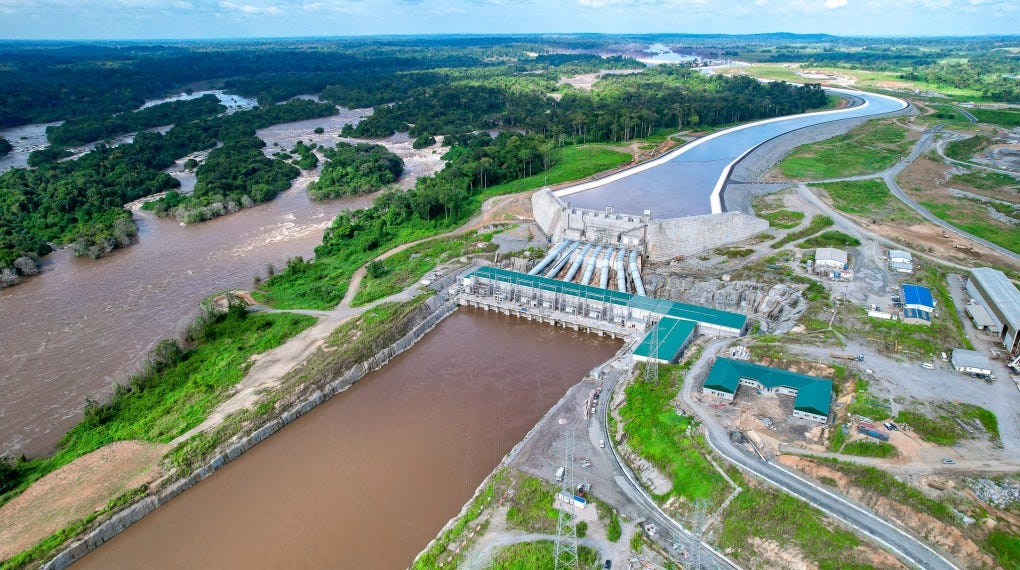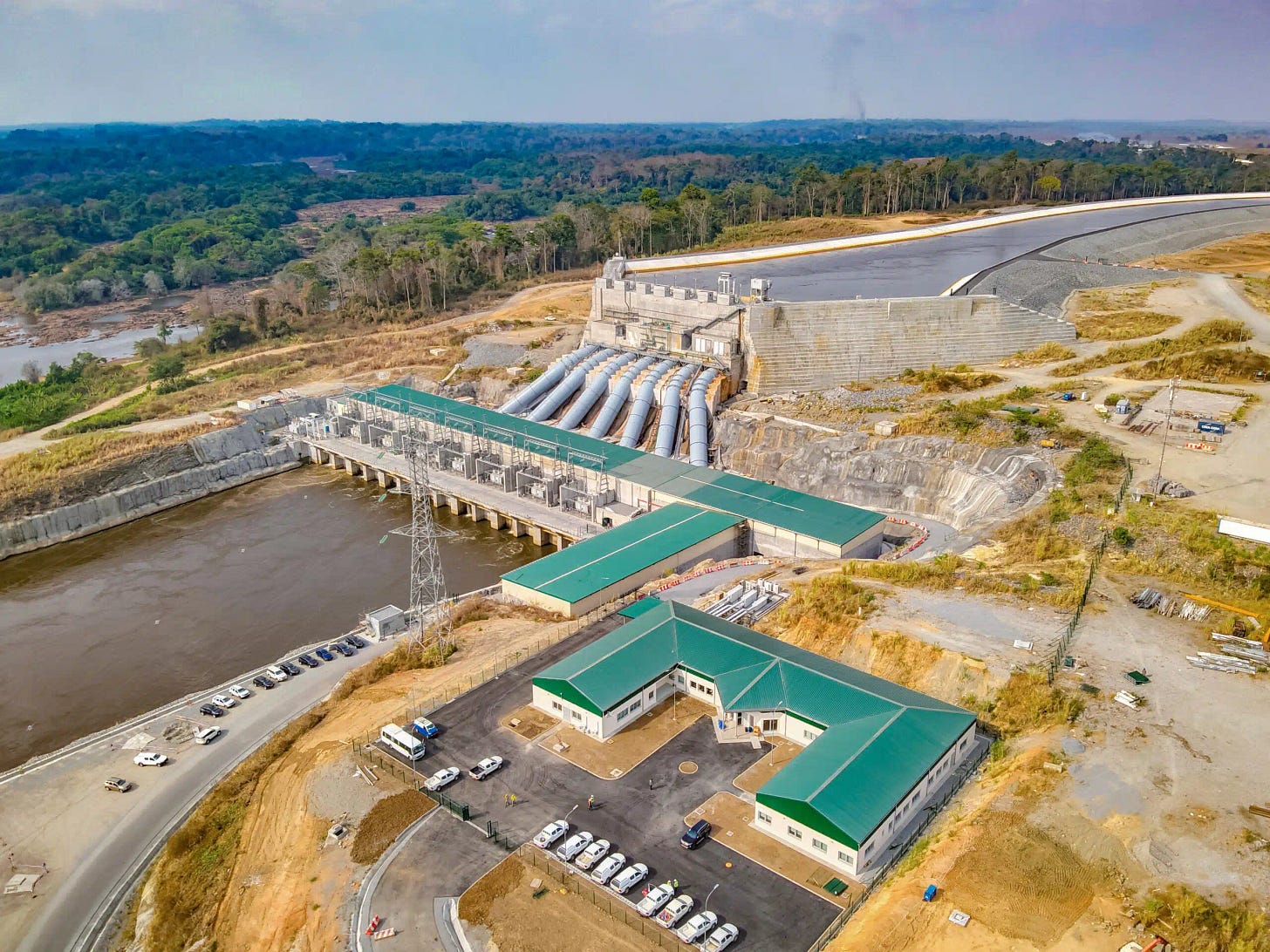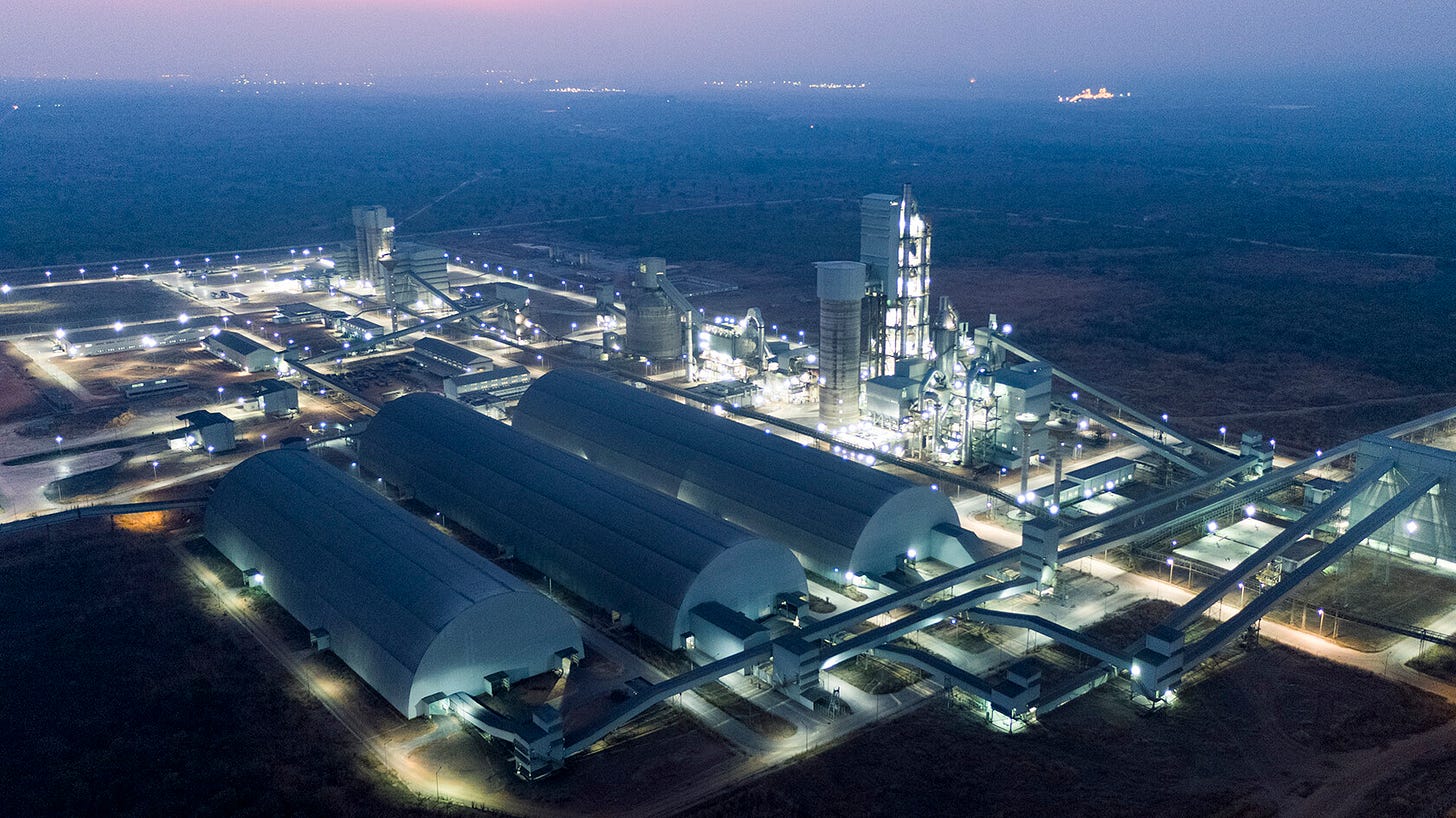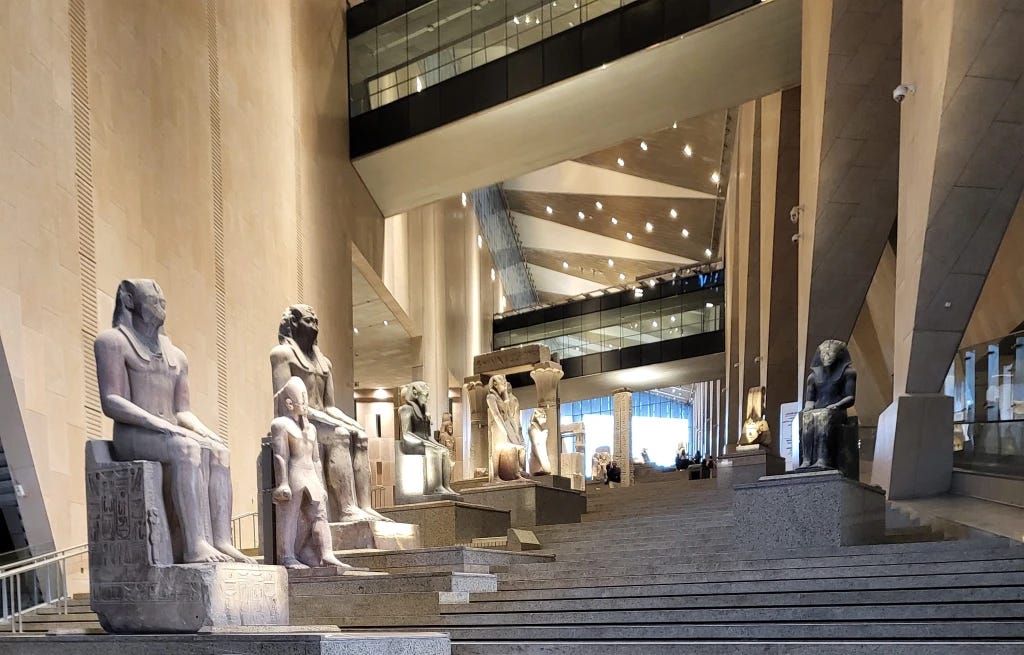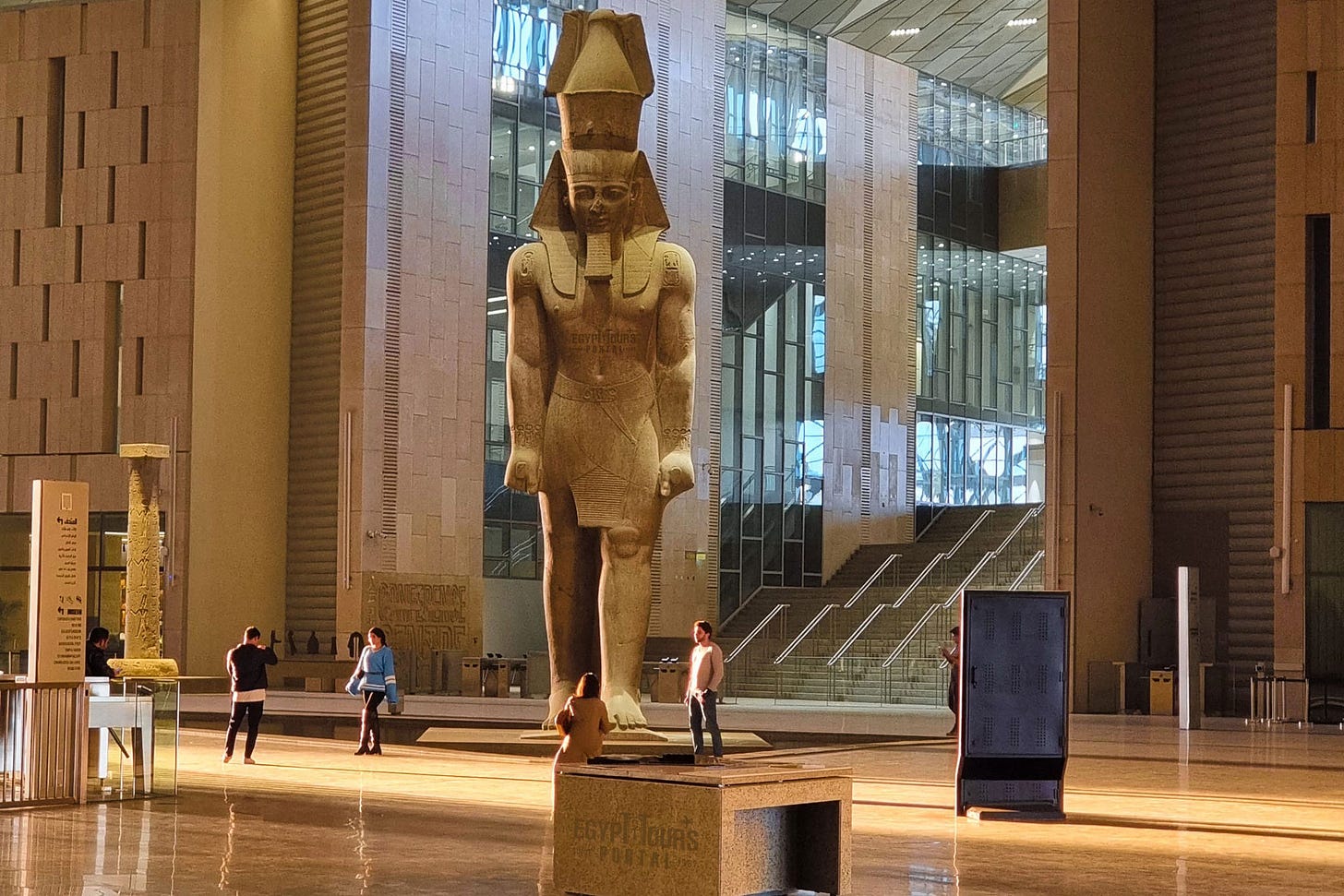Nkrumah's Infrastructure Journal - Week 4
Your weekly continental infrastructure update with three projects being presented for your increased optimism for the African continent and to show the speedy rate of productive physical development.
Project 1.
Name: The Nachtigal Hydropower Dam project
Where: Cameroon
Type: Hydropower Dam
Capacity: 420Mw
Cost: $1.1 Billion Usd - EDF (France) + State of Cameroon + the World Bank Group
Contractor: Besix (Belgium) + NGE (France) + SGTM (Morocco)
Construction start: 01.02.2019
Construction end: 1st turbine installed - 15.05.2024 - 7th and last turbine installed March, 2025.
Significance:
The Nachtigal Hydropower Dam project is Cameroon’s very first IPP Hydropower Dam Project and will provide 30% of the nations power needs, for a lifespan of 35 years.
Cameroon has significant Bauxite reserves and the Nachtigal hydroelectric dam was mainly designed to meet the energy needs of ALUCAM (Aluminium of Cameroon) who were planning to extend their plant. New studies were carried out and the State of Cameroon, ALUCAM and its partner ALCAN signed a letter of intent to jointly carry out this project in 2005.
The Dam is considered one of the most important industrial projects of Cameroon and sub-Saharan Africa in the energy sector.
The government of Cameroon has set an ambitious vision to expand access to electricity, increase the use of renewable energy, boost power generation, and strengthen transmission capacity to meet a surge in demand, projected to quadruple by 2035. More than 140,000 households in the rural areas of the Center region have gained access to reliable electricity over the past year thanks to the new Dam
Project 2.
Name: The Dangote Itori Cement Plant
Where: Itori, Nigeria
Type: Cement factory
Capacity: 6 million tonnes annual
Cost: $800 Million Usd
Contractor: Dangote Industries Limited (Nigeria) + China Sinoma International Engineering (China)
Construction start: March, 2025
Construction end: November, 2026
Significance:
The Dangote group is owned and operated by the richest man in Africa, Aliko Dangote and he comes from Nigeria. The Dangote group operates in 17 Industrial and agricultural sectors.
Speaking at the signing ceremony, Dangote said that new integrated cement plant at completion will strengthen the local production capacity of Dangote Cement, bringing its local capacity to 41.25 million tons per annum and total African capacity to 57.6 million tons per annum. He said the Itori Cement Plant will also increase Nigeria’s capacity to export cement, thereby enabling more diversification and foreign exchange inflows for the economy. When the cement factory is complete, the state where its being built, Ogun, will be the largest cement-producing region in Africa!
According to Dangote, the project is further expected to develop the domestic economy through creation of thousands of indirect and direct jobs and drive economic development in the Itori axis. Ancillary businesses, he stated will be drawn to the axis, who will be seeking to take advantage of the location of the cement plant to provide goods and services to staff, contractors and other stakeholders.
When operational, the plant is expected to have two Lines x 6,000 TPD Clinker Production with an installed daily total capacity of 12,000 TPD of Clinker production. It is expected to be completed within 27 months with best-in-class equipment in the cement industry, sourced from Europe’s major equipment suppliers
Project 3.
Name: The Grand Egyptian Museum
Where: Giza, Egypt
Type: Museum
Size and Capacity: 490,000 square meters or 15,000 daily visitors
Cost: $1 billion Usd
Contractor: Heneghan Peng Architects (Ire + US) + Orascom Construction/BESIX (Egypt + Belgium)
Construction start: 12.03.2012
Construction end: 06.02.2023 (limited access), 03.07.2025 (Grand opening)
Significance:
Spanning 50 hectares, the GEM is twice the size of both Paris’ Louvre and New York’s Metropolitan, and two and a half times the size of the British Museum in London.
An 11-meter statue of Ramses II greets visitors, leading to a grand staircase lined with statues of pharaohs, gods and sarcophagi and ending at a window framing the pyramids. Currently, 12 galleries display around 15,000 artefacts arranged chronologically from prehistory to the Greco-Roman period. They include Queen Hetepheres’s treasures, such as her intricately-carved armchair, in sophisticated lighting after years of being tucked away in the old Egyptian Museum in Tahrir Square. The GEM will also showcase the 44-metre-long cedarwood solar barque, buried near the Great Pyramid around 2,500 BC.
Among the most anticipated displays for the grand opening are the treasures of Tutankhamun, including his iconic gold mask. More than 5,000 Tutankhamun artefacts have been transferred to the GEM, though his full collection, including his sarcophagus and the embalmed remains of his daughters, will be revealed at the official opening.
President Abdel Fattah al-Sisi has invited US President Donald Trump and Spain’s King Felipe VI to attend the ceremony. “This museum is the world’s largest museum for a single civilization, which is the Pharaonic civilization,” Sisi said in December.
The GEM is expected to attract five million visitors annually, adding to a record 15.7 million tourists in 2024. Elhamy al-Zayat, former chairman of the Egyptian Tourism Federation, said the museum’s proximity to the newly-opened Sphinx International Airport, the pyramids and a growing number of nearby hotels will be a game-changer for Egypt’s tourism sector.
“This will definitely transform Egypt’s tourism industry.
”




